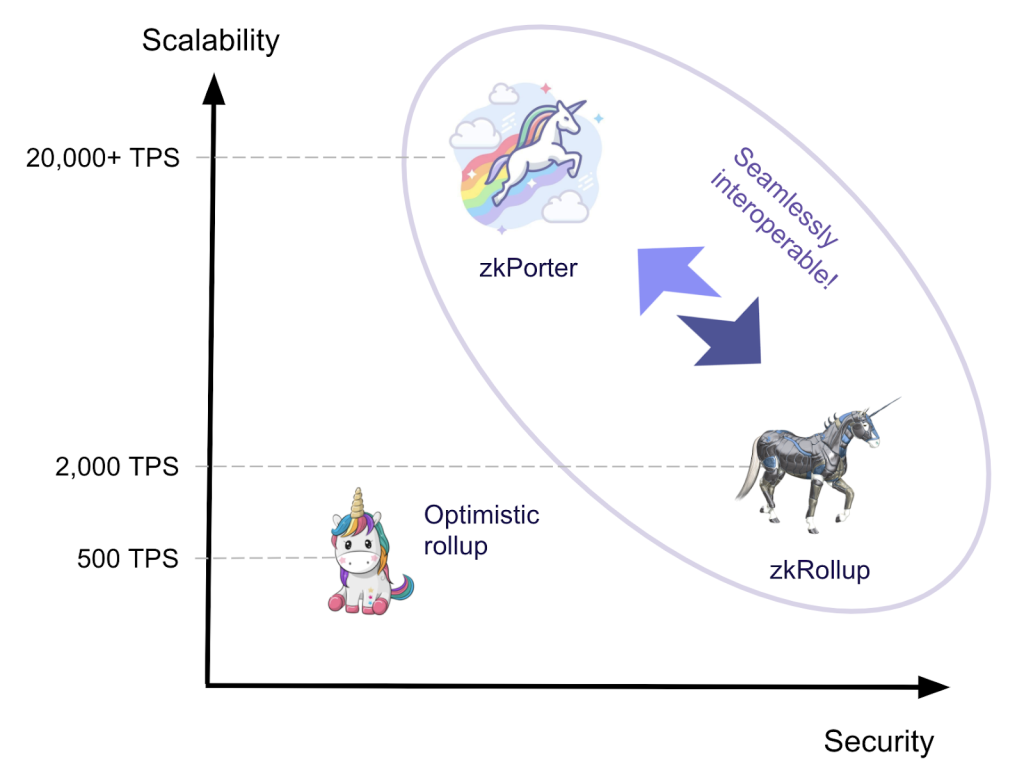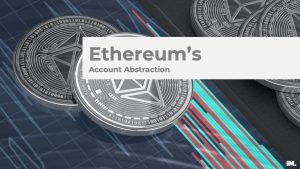On A Mission To Scale Ethereum
‘Scaling Ethereum’ has almost become a buzz word in the crypto community. Ethereum is known for having troubles handling large transactions volumes. To put things in perspective, Ethereum’s average transaction costs are $ 2,93. However, in times of high volumes, like in 2021, average transactions costs spiked to $ 40 per transaction!
Because of this, a technological race started to solve the scalability problems. There is generally two ways companies are tackling this issue:
- new layer 1 network developing innovative validation mechanisms that would work better at scale, and
- new layer 2 networks developing solutions to offload transaction volume from the Ethereum network but still leveraging the base technology developed on Ethereum main network.
Despite many layer 1s claiming to be hundreds of times faster than Ethereum, like Solana, Ripple, etc., there is one thing that they are missing: that speed is still a theoretical speed because they have not yet have to deal with Ethereum’s transaction volume. To put this in perspective, Solana has a daily transaction volume of $196 million. Ethereum is currently processing $ 5,3 billion. Quite a different challenge to tackle!
Layer 2 Scalability Solutions
Layer 2 networks help take off the load from Ethereum main network. They batch blocks of transactions together and process them in a separate, fast, cheaper network. After validating transactions, they upload the result back to the main network.
There are typically 4 categories of layer 2 solutions, depending on how they group and process transaction outside the main network. The four categories are: rollups, side chains, channels, and bridges. For the purpose of this article, we will focus on rollups.
Rollups
Rollups are Layer 2 scaling solutions for Ethereum that allow for a large number of transactions to be processed off-chain while still ensuring the security of the Ethereum main network. They work by bundling multiple transactions together into a single transaction, which is then submitted to the Ethereum main network.
There are two types of rollups: optimistic rollups and zk-rollups.
Optimistic rollups use optimistic execution to process transactions off-chain. In other words, they assume that transactions are valid and only submit them to the Ethereum main network if a dispute is raised. This allows for a higher throughput of transactions and lower gas fees. However, it also introduces a small possibility of fraud, as invalid transactions can be submitted and only detected later.
Zk-rollups, on the other hand, use zero-knowledge proofs to ensure the validity of transactions. This means that the transactions are verified off-chain and the proof of their validity is submitted to the Ethereum main network. Zk-rollups provide stronger security guarantees than optimistic rollups, but are more complex to implement and have higher gas fees.
As you can probably already guess by its name, zkSync is a rollup solution for Ethereum main network based on zero-knowledge technology for off-chain transaction validation.
How Zero-knowledge Works
Zero-knowledge validation logic is a method for verifying the authenticity and correctness of information without revealing any of the underlying data. In other words, it allows for proving that a certain statement is true, without revealing any additional information beyond that statement.
The basic idea behind zero-knowledge validation is to use complex mathematical algorithms to create a proof of knowledge that a statement is true, without actually revealing the statement itself. This is done by using cryptographic protocols that allow for computations to be performed on encrypted data, so that the data remains private and secure.
The key feature of this protocol is that the prover has demonstrated knowledge of x, but has not actually revealed x itself. The verifier can be certain that the prover knows the secret value x, without actually learning what x is. This type of zero-knowledge validation is particularly useful for applications like cryptocurrency transactions, where privacy and security are paramount.
Why Is Zero-knowledge Technology Important?
The core of this technology is that someone can check the validity of a transaction hash without having to generate the hash itself (as for example, in proof of work). The implications are massive. All things being equal, this will allow to process more complex computations on the public blockchain since validators would not have to repeat the computation to validate its validity.
Introducing zkSync
zkSync is one of the most advanced zero-knowledge scalability solutions for Ethereum network. zkSync was born out of the German-based engineering team Matter Labs. Matter Labs was founded in 2018 and right from the start set out to solve Ethereum’s scalability issues. By 2020, Matter Labs released their first scalability solution: zkSync version 1, also known as zkSync Lite. After launch, zySync Lite processed 300 transactions per second. This was 20 times more than Ethereum’s capacity.
zkSync is backed by some of the most notable investors in the crypto industry, including the Ethereum Foundation, Andressen Horowitz’s a16z, Union Square Ventures, and Blockchain Capital. Total capital raised amounts to $ 458 million over a series of funding rounds from 2018 to 2021. On top of that they also raised a total of $ 200 million ecosystem fund to stimulate application development on their layer 2 network.

zkSync’s Upcoming Release
Matter Labs has been working on zkSync’s version 2, planning to launch in 2023. Version 2 will consist of two main modules: zkSync Ethereum Virtual Machine (EVM) and zkSync Porter.
Ethereum Virtual Machine
The zkEVM is a zero-knowledge rollup module available on the Ethereum Virtual Machine. EVM compatibility means that users and developers can seamlessly integrate that in their decentralized application (dApps). For example, Metamask will be able to connect to zkSync EVM module to offload their transaction to the zero-knowledge rollup layer and increase their transaction processing speed.
Porter Network
zkPorter is an off-chain scalability solution offering much more speed and cost efficiencies. Matter Labs developers estimate a transaction speed of 20.000 transaction per second. zkPorter is similar to Polygon layer 2 technology, with all validators off-chain.
More information about the upcoming release on this Matter Labs blog post.

What Is Next For zkSync
zkSync’s ecosystem is still in its early days. The total value locked is “just” $ 74 million. In comparison, Arbitrum’s TVL, the top layer 2 solution at the moment, amounts to $ 1,4 billion. The release of the Ethereum Virtual Machine and Porter network will mark a new era for zkSync. A total of 200 projects are already lined up to deploy on the new network when available.
For now, only a selected group of early stage development partners can deploy apps on the test network. We are talking about early stage development partners such as Uniswap, 1inch, etc. The next stage will be a full launch where all whitelisted projects can move their decentralized applications on the main network. The layer of applications built on the zk EVM is also called layer 3.
The full launch is planned somewhere in April 2023, together with its native token! Information around tokenomics is still vague and I guess will be disclosed closer to launch date. There is quite a lot of pressure on the team as Polygon is also launching a zero-knowledge-based network called Polygon Zero. At this point zkSync and Polygon Zero are the only two layer 2 networks competing in the space.




No comment yet, add your voice below!